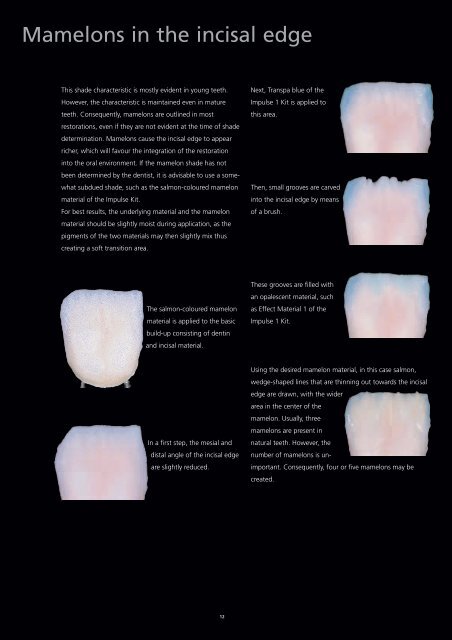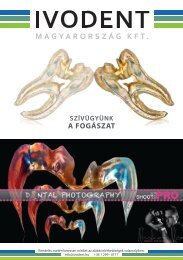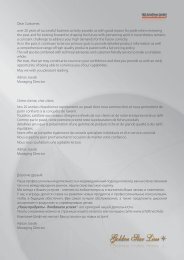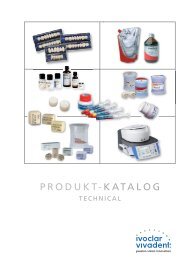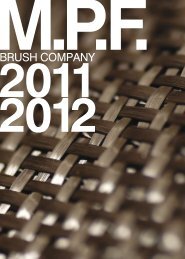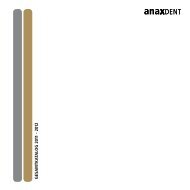Shade characteristics of natural teeth
Create successful ePaper yourself
Turn your PDF publications into a flip-book with our unique Google optimized e-Paper software.
Mamelons in the incisal edge<br />
This shade characteristic is mostly evident in young <strong>teeth</strong>.<br />
However, the characteristic is maintained even in mature<br />
<strong>teeth</strong>. Consequently, mamelons are outlined in most<br />
restorations, even if they are not evident at the time <strong>of</strong> shade<br />
determination. Mamelons cause the incisal edge to appear<br />
richer, which will favour the integration <strong>of</strong> the restoration<br />
into the oral environment. If the mamelon shade has not<br />
been determined by the dentist, it is advisable to use a somewhat<br />
subdued shade, such as the salmon-coloured mamelon<br />
material <strong>of</strong> the Impulse Kit.<br />
For best results, the underlying material and the mamelon<br />
material should be slightly moist during application, as the<br />
pigments <strong>of</strong> the two materials may then slightly mix thus<br />
creating a s<strong>of</strong>t transition area.<br />
Next, Transpa blue <strong>of</strong> the<br />
Impulse 1 Kit is applied to<br />
this area.<br />
Then, small grooves are carved<br />
into the incisal edge by means<br />
<strong>of</strong> a brush.<br />
The salmon-coloured mamelon<br />
material is applied to the basic<br />
build-up consisting <strong>of</strong> dentin<br />
and incisal material.<br />
These grooves are filled with<br />
an opalescent material, such<br />
as Effect Material 1 <strong>of</strong> the<br />
Impulse 1 Kit.<br />
In a first step, the mesial and<br />
distal angle <strong>of</strong> the incisal edge<br />
are slightly reduced.<br />
Using the desired mamelon material, in this case salmon,<br />
wedge-shaped lines that are thinning out towards the incisal<br />
edge are drawn, with the wider<br />
area in the center <strong>of</strong> the<br />
mamelon. Usually, three<br />
mamelons are present in<br />
<strong>natural</strong> <strong>teeth</strong>. However, the<br />
number <strong>of</strong> mamelons is unimportant.<br />
Consequently, four or five mamelons may be<br />
created.<br />
12


